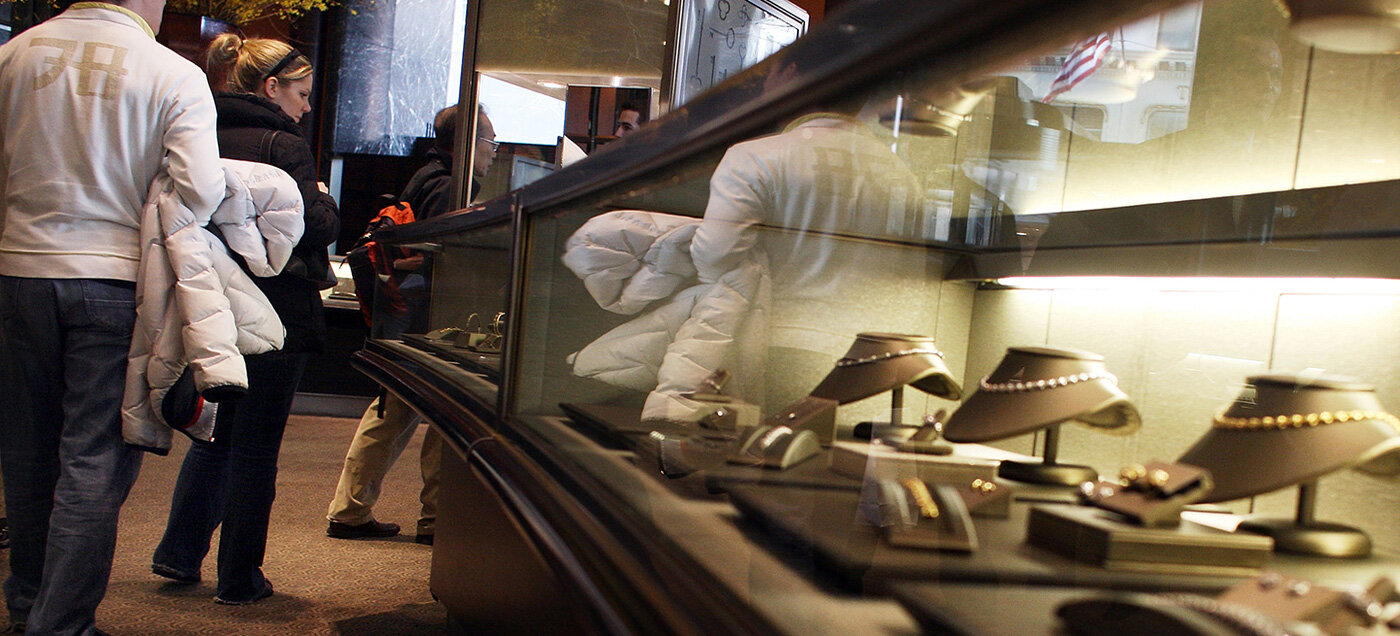World
Faith-based universities: Stability in a fragmented nation?

UNITED STATES
American higher education’s roots in religious education were consistently foregrounded at the inaugural meeting of the American Council on Education’s Commission on Faith-based Colleges and Universities and during subsequent interviews with the presidents of four of the commission’s member universities.
After revisiting the fact that the concept of ‘university’ itself comes out of the mediaeval Catholic Church’s idea of unity, “that truth is related to our belief in God”, Dr Peter Kilpatrick, president of the Catholic University of America (CUA, Washington DC), pointed to the charter of America’s oldest university, Harvard.
It was founded by the Puritans, a Calvinist-inspired evangelical Protestant sect most famous now for the Salem Witch Trials of 1692. Dating to 1636, Harvard’s charter, Kilpatrick read, says: “Let every student be plainly instructed and earnestly pressed to consider well, the end [purpose] of his life and studies is to know God and Jesus Christ, which is eternal life, there to lay Christ in the bottom as the only foundation of all sound knowledge and learning.”
Dr Shane Reese, president of Brigham Young University (BYU, Provo, Utah), grounded the flagship university of The Church of Jesus Christ of Latter-day Saints (Church of Jesus Christ), in this same history and explained that the pursuit of education is woven into the Church’s doctrinal foundation. (Founded in America in 1871, the Church of Jesus Christ is neither Catholic nor Protestant; according to its website, it is a: “Restoration of the Church of Jesus Christ as originally established by the Saviour in the New Testament of the Bible.
“We view all truth as pointing us to God and so the notion that we would be intentional and deliberate, and make significant financial investments pursuing higher education, is built into our church’s history, our church’s doctrine.”
Kilpatrick, Reese and presidents from Baylor University, a Baptist university in Waco, Texas; Oakwood University, a historically black university affiliated with the Seventh Day Adventist church; and Pepperdine University, an evangelical Protestant school in Los Angeles, also stressed – as Yeshiva University (YU) president Rabbi Ari Berman told University World News: “Nobody came there to create new theological underpinnings. We’re together as colleagues and we know that together we are better in handling many of the common challenges faith-based institutions face. It’s been a source of great strength for me in my presidency, my relationship with those presidents.”
National footprint
The Commission on Faith-based Universities, held in Baltimore, Maryland on 4 June, grew out of “The Fate of the Religious University” conference hosted by ACE in January 2023 during which presidents of these universities came together to discuss issues familiar to college presidents across the country: lack of access, affordability, completion and scholarship.
However, notes ACE’s press release, the presidents addressed these questions through the lens of “how their distinctive religious identities can be used to combat them” (although this does not include an Islamic religious identity, as there are no Muslim colleges involved in the ACE initiative).
The presidents knew that while faith-based colleges and universities enrol only 9% of American post-secondary students (1.8 million of almost 20 million), in some states the percentage is significantly higher. In Utah, for example, more than 17% of the state’s 219,000 undergraduates attend colleges operated by the Church of Jesus Christ.
Though not as famous as Ivy League universities or those in the so-called Ivy-Plus category – for example, Massachusetts Institute of Technology, Stanford, Johns Hopkins, Duke universities, the University of Chicago, University of Michigan, University of California (Berkeley) and California Institute of Technology – faith-based institutions educate four times as many undergraduate and graduate students: 1.8 million vs 340,000.
Further, according to the National Center for Education Statistics (Department of Education) the proportion of students enrolled in faith-based universities has not just grown since 1980, it has grown faster than the national average: 82% vs 57%.
When the overall decline in the number of post-secondary students caused by the COVID-19 pandemic is factored in, enrolment in religious universities has remained unchanged, while public and private universities have seen a 9% and 12% decline, respectively, in their enrolments, says a fact sheet prepared by ACE.
“The increase in enrolment at these colleges is impressive, but what stands out even more is high graduation rates – a benchmark that has long challenged higher education.
“These institutions set an example with their cohesive community values and engagement from day one, offering a blueprint for fostering student belonging that campuses aspire to achieve,” Ted Mitchell, president of the American Council on Education told University World News in an email.
Church vs science
Largely due to controversies almost three centuries apart, in many quarters in America (and large parts of Europe) suspicion lingers about faith-based universities and their commitment to academic freedom, especially in the sciences.
The first controversy involved Galileo (d 1642) and the Roman Inquisition over his Dialogue Concerning the Two Chief World Systems published in 1632.
In it, Galileo gives his mouthpiece, Salviati, the better arguments for the heliocentric system (that is, that the planets revolve around the Sun) than Simplicio has for the Catholic Church’s approved Ptolemaic system (that is, that the Sun revolves around the Earth).
The Inquisition forced Galileo to “abjure, curse, and detest the aforesaid errors and heresies” he had written and placed him under house arrest for the rest of his life.
The second controversy, “The Scopes Monkey Trial,” occurred in Dayton, Tennessee in 1925 when high school teacher, John T Scopes was convicted of violating a state law against the teaching of evolution; according to a 2019 study by the Pew Research Center, 57% of American evangelicals rejected Darwin’s Theory of Evolution.
While each of the university presidents interviewed for this article acknowledged this history, each took great pride in noting that their institutions are major research universities.
According to the Carnegie Classification of Institutions of Higher Education, each is an ‘R2 Doctoral University’, which denotes ‘High research activity’.
According to Berman, in the Jewish tradition, there is little tension between scientists’ academic freedom and faith because “Judaism is a religion of questions. As you can see from the Passover night (when the youngest child asks four questions about the celebration of the Exodus from Egypt), we’re always asking questions.”
Turning specifically to science, Berman cited the late Rabbi Lord Jonathan Sacks, who said: “Science explains what is; faith explains the meaning of what it is.” In other words, “Science takes apart the world to categorise it. Faith puts the world back together and gives it meaning.”
Kilpatrick began his response to the popular conception of a church-science dichotomy by saying that at the heart of the standard understanding of the Galileo story is a false opposition.
“Galileo never wanted to leave the Catholic Church and he didn’t. The basis of the controversy was his diminishment of the Holy Father [by making Simplicio so much like Pope Urban VIII]. He ridiculed him as being backwards.
“The Holy Father had an ego, and he basically told Galileo, ‘Look, if you don’t apologise, I’m going to have to discipline you.’ And Galileo was stubborn. But there was no conflict between Galileo’s science and what the Church taught.
“Scripture uses personalist language when it says: ‘The sun rises in the east and sets in the west’. The Church was not challenging that it was actually the Earth moving around the Sun and not the Sun moving around the Earth.”
Later, Kilpatrick, himself a scientist, drew on his training as a chemical engineer to delineate the ontological and epistemological boundaries of science – though not of scientific inquiry itself.
“Where there is a conflict is when scientists overstep their boundaries and say, ‘There is nothing beyond the material universe’. They have no evidence for that. So they’re using science, which is totally based on material evidence, to try to prove something that is nonmaterial.
“Theists like myself would say that there are plenty of logical reasons for believing that there’s something beyond the material universe,” he said.
By way of example, he asked: “How is it that human beings have ‘free choice’? Where does it come from if it’s all material, it’s all deterministic?”
As for the question of evolution, Kilpatrick told me that I was correct that Pope John Paul II had said that evolution was “more than a hypothesis” and there was no conflict between it and Catholic teachings.
Reese, who is also a scientist and worked as a statistician at the nuclear laboratories at Los Alamos, New Mexico where the first atomic bombs were developed during the Second World War, told University World News: “We teach evolutionary processes as it applies to species as a theory on this campus.”
The problem of orthodoxy
While each university president answered my question about faith and science, it was easy to tell from their body language that each was much more interested in discussing how their universities, far from stifling inquiry, are, as Berman put it, “very much bastions of academic freedom”.
“I’ve spoken to a number of professors who said that it’s only in faith-based universities that they actually had academic freedom. They had to leave the secular university to be able to speak their minds because of an orthodoxy about what’s allowed in the academy today,” Berman continued.
According to Reese, social scientists at BYU feel liberated to, for example, “ask questions about family formation that may not be in the direction that the rest of the field is going”.
As part of the three pillars of strategic research at BYU, which includes fostering religion and constitutional government as institutions that the Church of Jesus Christ believes are necessary for human flourishing, some of BYU’s social scientists produce research that shows the importance of the family.
This research, Reese added, is not only part of the traditional peer-reviewed work of professors but is also published in formats that are accessible to the public such as reports on government education initiatives aimed at reducing divorce.
As regards constitutional government, BYU’s academic vice-president, for example, has expertise on the German Constitutional Court, and other scholars at BYU’s law school run the International Center for Law and Religion Studies, with a global interest in constitutionalism and religious freedoms, said Reese.
Part of the curriculum at CUA would have been familiar to Galileo’s students at Università degli Studi di Padova, where he taught from 1592 to 1610. “We still require all students to take courses in classical philosophy, the great books [of Plato and Aristotle], with a lot of primary sources and two courses in theology,” said Kilpatrick.
“There’s a lot of reading and writing. There’s no substitute for that, for, as you put it, when it comes to learning how to read and write, you just have to do it. And then you have to be challenged to do it well, and you have to be coached on how to do it well,” he told University World News.
In his explanation of academic freedom at YU, Berman drew a contrast with other universities, arguing that, in some “the orthodoxy of the academe is very simplistically colonial. The colonisers versus the colonised. It splits the world into two groups and creates this very false and simplistic narrative of who are the victims, who are the villains”.
A crisis of meaning
The final question University World News asked each of these university presidents was: “How is your university positioned to help calm the riven state of American higher education?” All diagnosed the cause in similar terms: the existence of a crisis of meaning among Americans in their late teens and early twenties.
Berman put it this way: “Faith-based universities give a context for higher education that is filled with values, meaning and purpose.”
For his part, Kilpatrick told University World News that at other universities, “the role of identity politics and the many voices, none of whom does the university say has a privileged position with regards to truth, have led to a fragmented culture”. By contrast, he says, faith-based universities provide a stable foundation, albeit a different one, for students.
“Look, we believe we have the truth,” Kilpatrick continued. “But, you know, I don’t agree with you on certain elements of dogma. But we can certainly agree on elements of science.
“We can debate elements of social conscience and social justice. We don’t have to be disagreeable with each other. That’s an important role for faith-based universities and it’s what we are doing with the public sphere.”
Reese struck a similar note as he linked a student’s search for meaning with how the Church teaches individuals must be viewed. “I watch students walk through our doors, who I know are suffering from an epidemic of loneliness, a crisis of meaning. We can talk to them about having some deeper meaning in their lives,” he said.
“That’s what we are seeing with our applicants, a reflection of their desire to learn in an atmosphere of faith, so I think we can fill that void.
“And, by the way, I’m not being critical of my colleagues who don’t have faith. No, what religious-based education does is it completes a tapestry of higher education. We can talk about things from that moral footing,” he added.
“We actually believe fundamentally, from the tenets of what Jesus Christ taught, that we don’t do that in the spirit of contention, and that we can have those conversations.
“We can have those conversations because of our Christian values, because we say that we’re real believers in Jesus Christ and what he taught, that we can look at someone else and recognise them as a child of God. And that means treating them with respect.
“I might not always agree with them – by the way I don’t agree with my colleagues who are on this campus on every issue that comes up, be it scientific or political. But I know I respect them and love them because I recognise that they, like me, that we believe, jointly, that we’re both the children of God,” he explained.
Because Yeshiva is the largest and most famous Jewish faith-based university in America and is unabashedly Zionist, YU’s president has been in a unique position vis-a-vis the pro-Palestinian encampments and increasing acts of antisemitism on US campuses, including at nearby Columbia University.
In response to demands of Jewish students wanting to transfer to YU because of fears for their safety, the university has increased the number of places available to transfer students for this coming academic year and opened an on-line transfer portal. (Brandeis University in Boston, where approximately 35% of the student population is Jewish, has made a similar commitment.)
“We’re packed, but we’re not going to let any Jew who feels unsafe go unprotected. But our goal is to keep them safe on their campuses. Campuses need to be safe for Jews, not free from Jews. That’s been so much of my work this year, working to protect Jewish students on other campuses and, I feel, part of my responsibility because we’re the flagship Jewish university,” said Berman.
The canary in the US coal mine
He said he has real reason for concern about the future of the country, and not just for Jews. “Antisemitism, as you know, is the canary in the coal mine. And it does not bode well, certainly for any minority.”
But he said moments of disruption can also contain moments of opportunity and that “people are recognising that something’s wrong, and we need a fundamental shift”.
“Optimism,” he said, “is finding partners, finding the angels who will stand on what’s right. And, it’s my work to identify them and to partner with them – and why this faith-based commission that ACE has established is exciting and historic.”
He concluded: “In the past, you would not have found, as you said before, faith-based institutions rallying and supporting each other. This is an example of the type of good people that are working together.”










